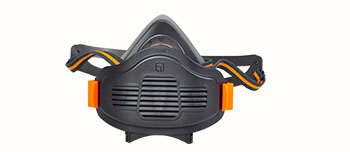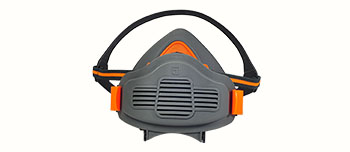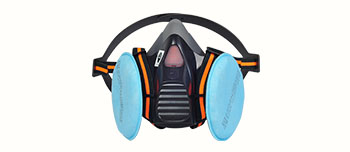In the mechanical processing industry, lathe workers are exposed to harmful substances such as metal dust, cutting fluid mist, and oil mist for a long time. If respiratory protection is not taken properly, it may lead to occupational diseases such as pneumoconiosis, chronic bronchitis, and even lung cancer. Therefore, it is crucial to choose and use respiratory protective equipment correctly. Here are several key points for lathe workers to take good respiratory protection.
1. Understand the hazards in the homework environment
The hazards generated during lathe machining mainly include:
Metal dust (such as small particles of iron, aluminum, copper, etc.)
Cutting fluid mist (containing oily or water-based chemicals)
Welding fumes (such as during welding operations)

Grinding dust (such as when using a grinding wheel)
Workers should be aware of the main types of pollutants in their work environment in order to choose appropriate protective equipment.
2. Choose appropriate respiratory protective equipment
According to different working environments, lathe workers can choose the following respiratory protective equipment:
(1) Dust mask (KN95/KN100)
Suitable for ordinary lathe operations with less metal dust.
Can filter at least 95% of non oily particles.
Ensure that the mask fits snugly against the face to avoid air leakage.
(2) Half face gas mask (with particle filter cotton)
Suitable for environments with high dust or oil mist.
Can be paired with P100 grade filter cotton, with a filtration efficiency of 99.97%.
Regularly replace the filter cotton to avoid clogging and affecting breathing.
(3) Full face mask or electric air supply respirator (PAPR)
Suitable for environments with high concentrations of dust, oil mist, or harmful gases.
Provide more comprehensive facial protection and reduce skin contact with harmful substances.
Electric air supply respirators can reduce respiratory resistance and are suitable for long-term wear.
3. Wear and maintain protective equipment correctly
Check sealing: Before wearing a mask or mask, check if it fits the face to avoid air leakage.
Regularly replace filter materials: The filter cotton or filter box should be replaced in a timely manner according to usage, and cannot be reused for a long time.
Cleaning and Storage: Protective equipment should be cleaned and stored in a dry, pollution-free environment after use.
4. Strengthen workshop ventilation and dust reduction measures
Use local exhaust equipment (such as vacuum hoods, exhaust fans) to reduce dust concentration in the air.
Adopting wet processing or installing oil mist collectors to reduce oil mist pollution.
Regularly clean the machine tool and work area to avoid dust accumulation.
5. Regular health check ups
Lathe workers should undergo regular occupational health examinations, especially lung function tests, to detect potential health problems early.
conclusion
Respiratory protection is an important guarantee for the occupational health of lathe workers. Choosing appropriate protective equipment, using it correctly, and cooperating with good workshop environmental management can effectively reduce the risk of occupational diseases. Both workers and managers should pay attention to respiratory protection to ensure safe production and long-term health.
 English
English





